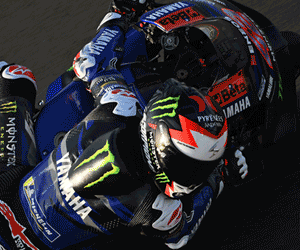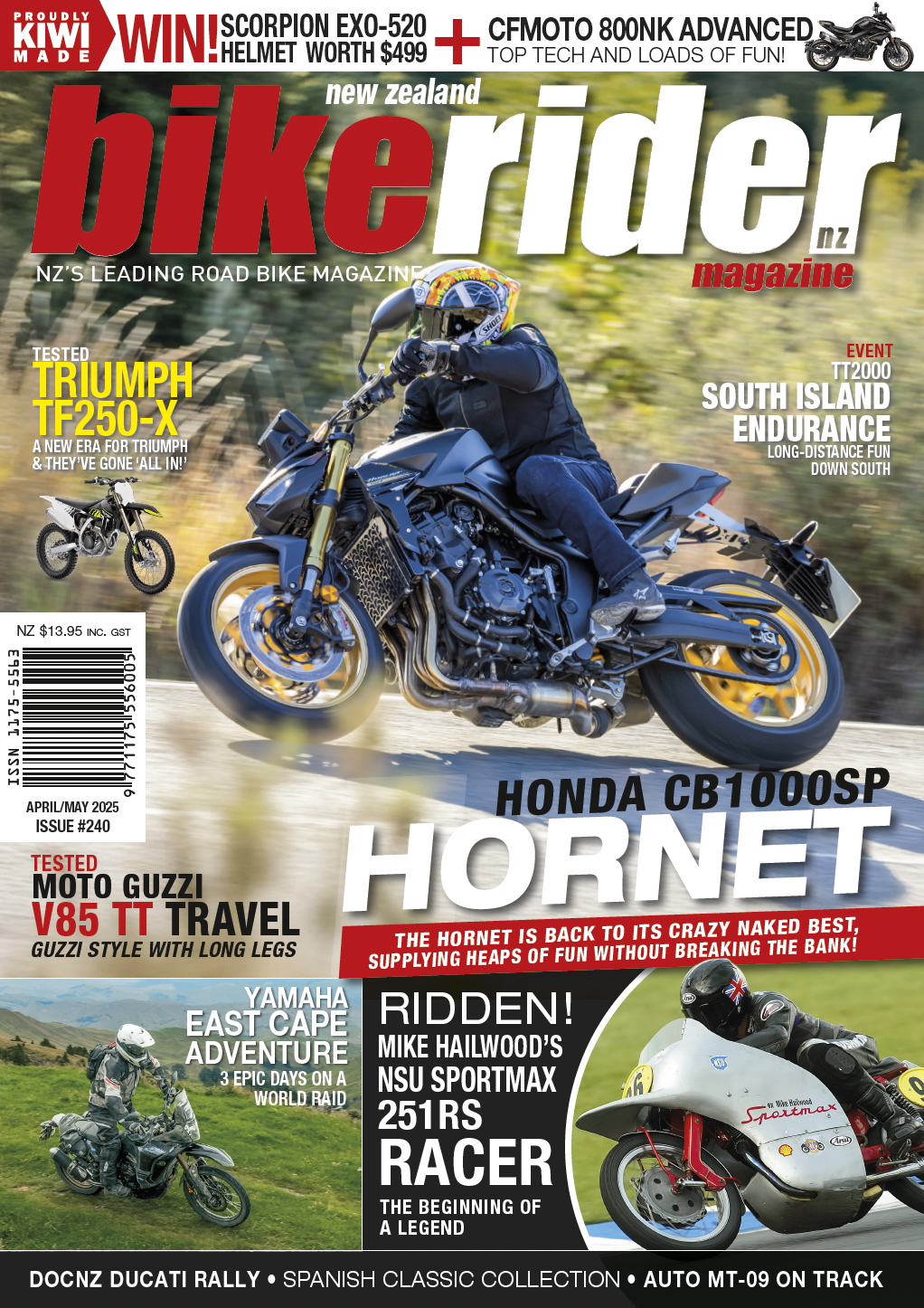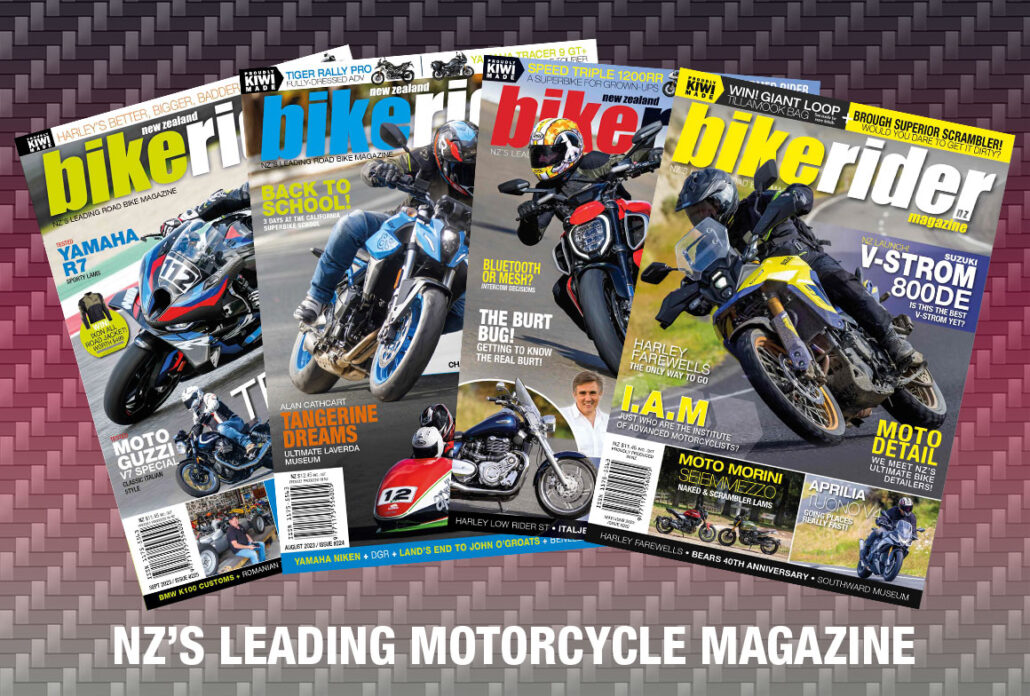Honda’s hard-core adventurer gets even better for 2020, with a lighter chassis, increased engine capacity, a six-axis IMU, and a 6.5-inch TFT touchscreen with Apple CarPlay® with Bluetooth connectivity.
Honda’s Africa Twin can trace it’s lineage back over three decades, since the Honda XRV650 Africa Twin first rolled off the production line. Relaunched in 2016 as the CRF1000L Africa Twin, the new machine inherited the essence of spirit of the original model for adventure enthusiasts the world over. In 2018 the Africa Twin was updated with options for a Dual Clutch transmission (DCT), and included Throttle-By-Wire (TBW) with 3 riding modes and expanded Honda Selectable Torque Control (HSTC) options, as well as improved intake and exhaust design for better performance. Now, the 2020 model benefits from even more upgrades, offering an even sharper off-road focus. The lighter package, endowed with more power and torque, follows the principles of the original Africa Twin all those years ago.
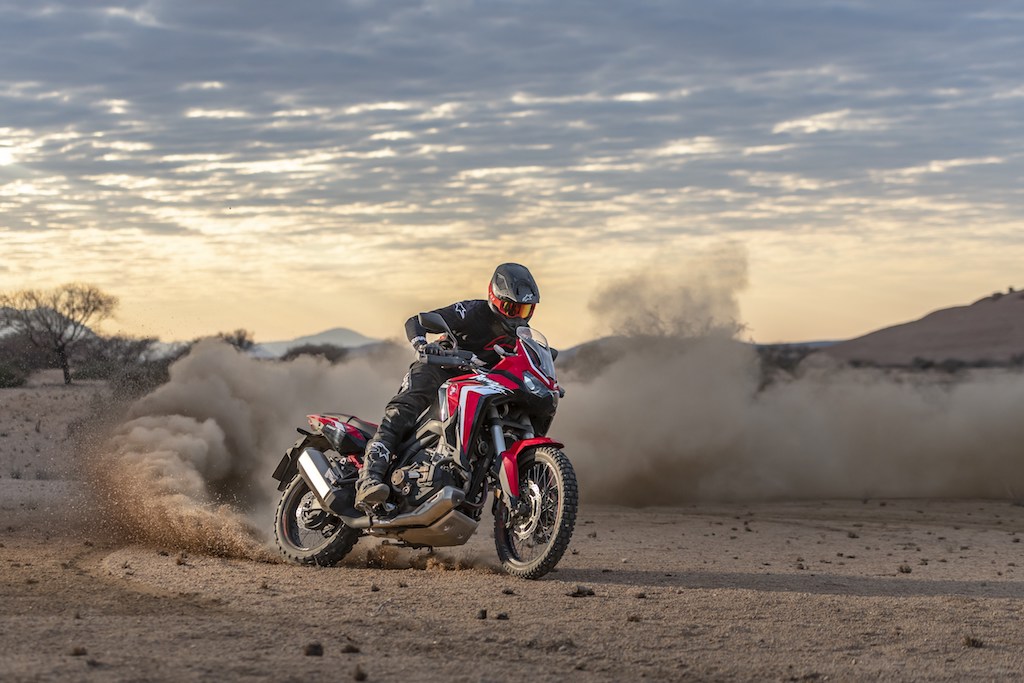
The 2020 Honda Africa Twin has a completely revised frame, with a new bolt-on aluminium subframe, and an aluminium swingarm that is based on that of the CRF450R motocross bike. The whole machine is 5kg lighter than the previous model, and thanks to changes to the engine, produces 7% more peak power and 6% more peak torque, making it stronger throughout the entire rev-range, whilst retaining Euro5 emissions compliance.
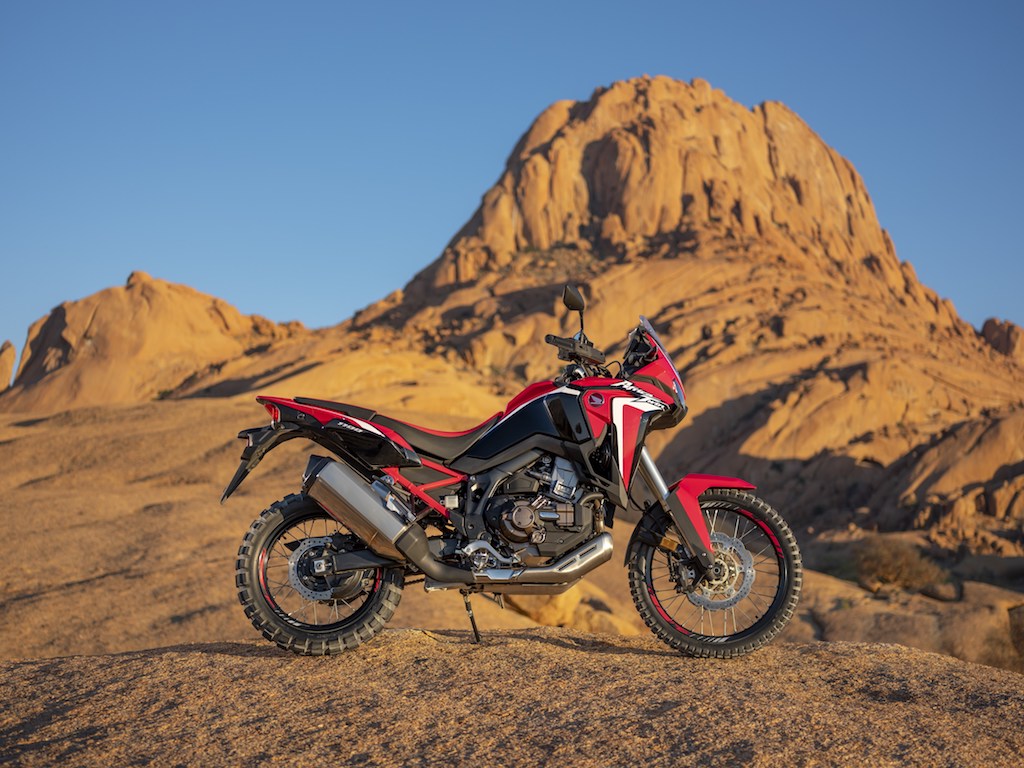
The new steel
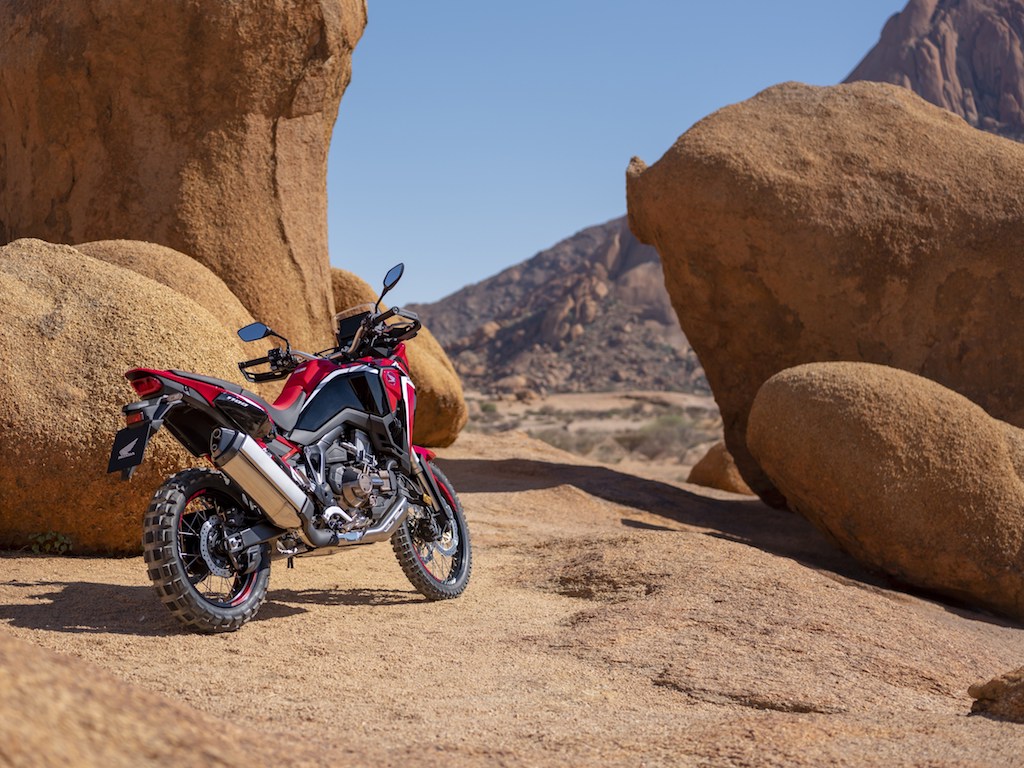
The SOHC 8-valve parallel-twin engine’s essential architecture remains unchanged for 2020, but has a larger displacement of 1084cc, up from 998cc. As a result, peak power is increased from 70kW to 75kW at 7500rpm, with peak torque going from 99Nm to 105Nm at 6250rpm. To create the larger capacity, the cylinder bores remain at 92mm but stroke is increased to 81.5mm (from 75.1mm), with a compression ratio of 10.1 to 1. The new cylinder sleeves are now aluminium. The cylinder head has been completely revised, and a new 46mm throttle body provides better fuelling. The aluminium clutch centre and pressure plate use ‘assist’ cams to ease upshifts, and ‘slipper’ cams for deceleration and downshifting, with a smaller clutch diameter and reduced clutch spring tension for a lighter
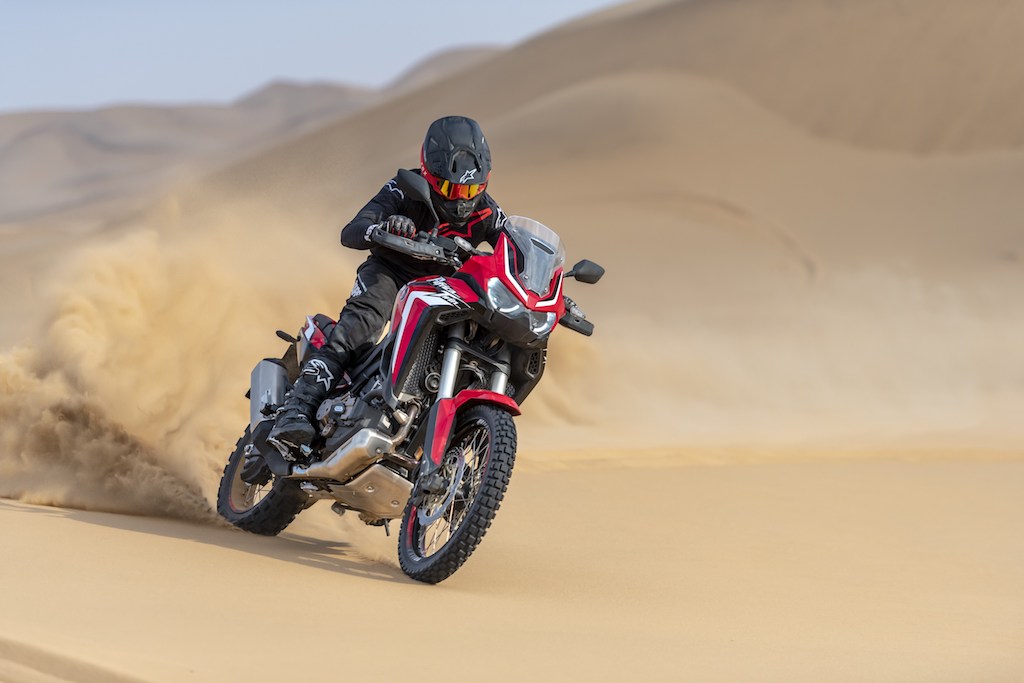
The 2020 Honda Africa Twin TBW has also been further evolved, now working in conjunction with the six-axis IMU. The system offers 4 levels of power management, and 3 levels of engine braking. There are still 7 levels of HSTC but each level’s amount of intervention has been optimised to work with real-time input from the IMU (yaw/roll angle and rate). The spacing of the levels has been optimised to allow the rider a finer choice of the amount of rear-tyre slide for off-road riding. HSTC can also be turned off completely. The ABS is also selectable, with an on- and off-road settings.
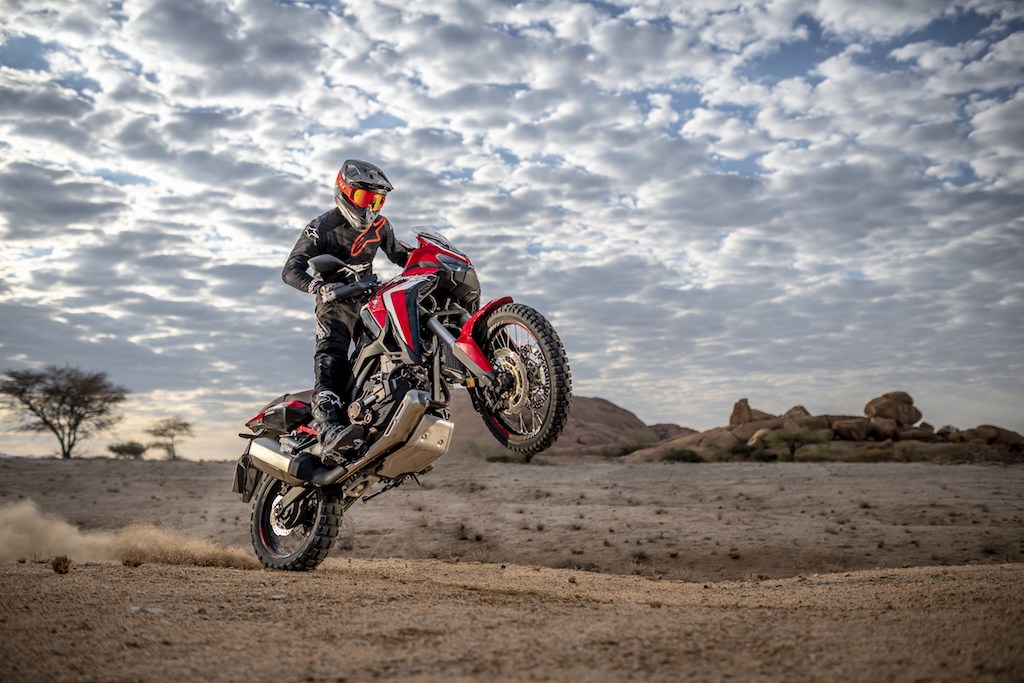
The Wheelie Control is a new feature, courtesy of the new six-axis IMU, with 3 levels of input available to the rider. It can also be deactivated. There are 4 default riding mode selections: Tour, Urban, Gravel, and Off-Road, to cover most riding conditions. Two customisable User settings are also available for riders to change parameters to their liking: HTSC levels 1-7 (plus off), Wheelie Control levels 1-3 (plus off), and DCT S mode shift pattern levels 1-3. For 2020 cruise control is also fitted as standard, to ease long-distance highway travel.
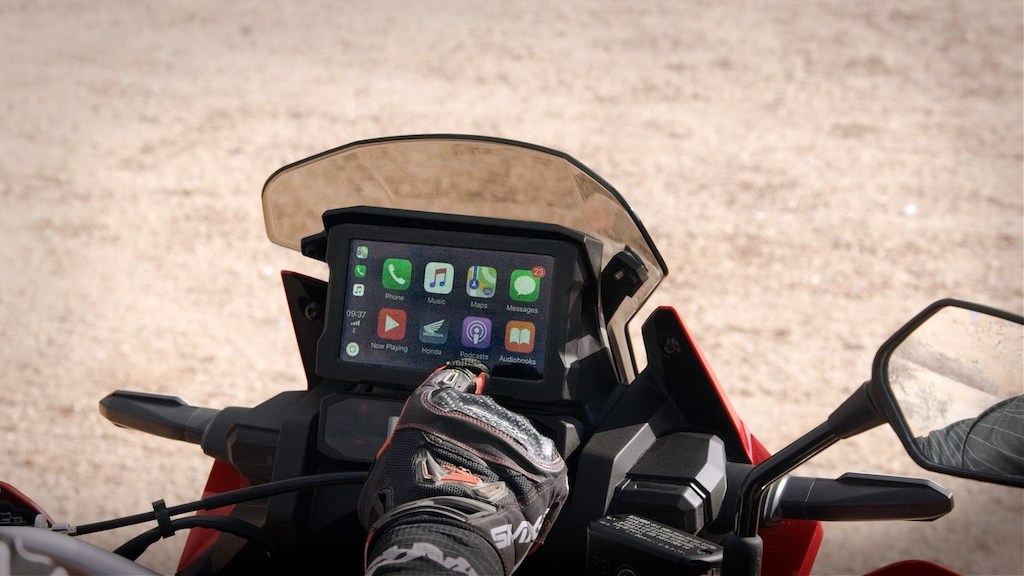
The full-colour Multi Information Display (MID) 6.5-inch TFT touchscreen keeps the rider in control of all of the Africa Twin’s systems, and is customisable to show various levels of information relative to the riding mode chosen. It is sensitive enough to be used with gloves, and also incorporates Apple CarPlay®, allowing the use of an Apple iPhone through the touchscreen. Navigation apps can also be accessed and displayed, and via a Bluetooth helmet headset, calls can be made or received. The iPhone itself can be charged via an onboard USB port on the right of the MID. The left-hand switchgear has incorporated toggles for easy control of the device.
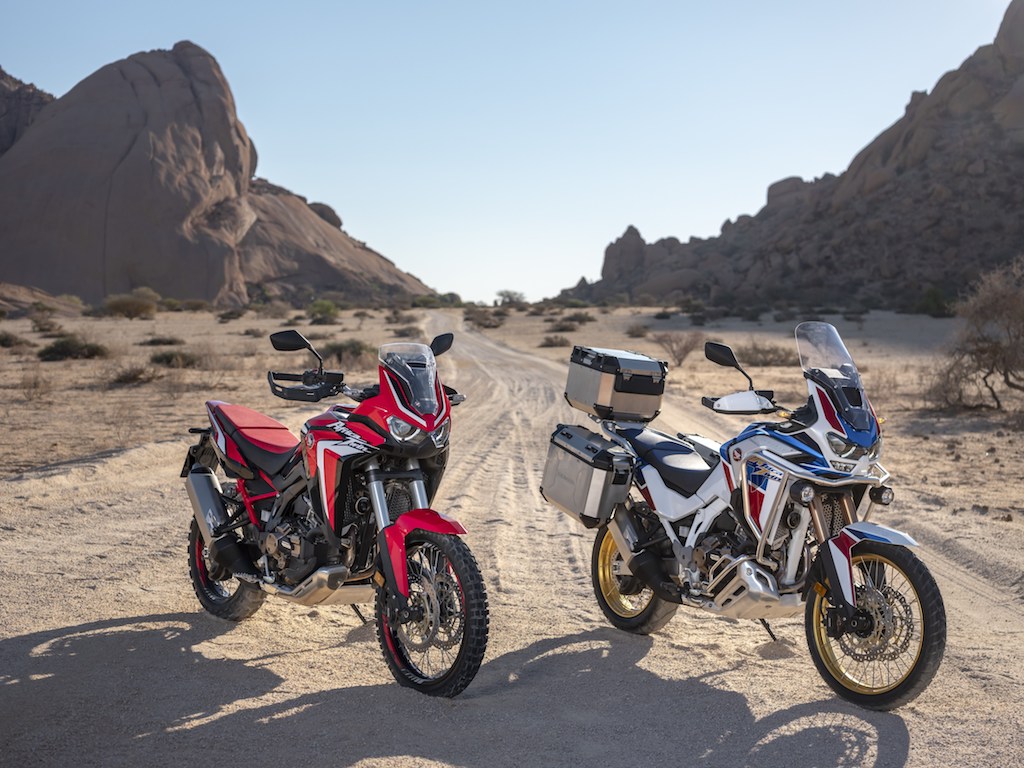
Photos: Honda Europe








